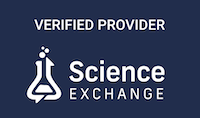OncoBone attended the European Calcified Tissue Society (ECTS) Annual Meeting on May 25-28 in Marseille, France. The event covered main areas in basic and clinical research and provided opportunities for scientists to network and share their research. Interesting research areas for OncoBone included osteoimmunology, basic research sessions discussing interactions between bone and immune cells, and rare bone diseases that has been an upcoming field of research in recent years.
OncoBone is a distributor of small-animal DXA iNSiGHT in Europe. In ECTS, OncoBone presented a poster titled: ‘Dual-energy x-ray absorptiometry (DXA) differentiates body composition and bone mineral density in different mouse strains’. Below is a summary of what we presented in the poster.
Imaging methods in bone and metabolic research
Widely used imaging methods include Dual-energy X-ray Absorptiometry (DXA), peripheral quantitative computed tomography (pQCT) and micro-computed tomography (µCT) in bone research, and DXA and nuclear magnetic resonance (NMR) in metabolic research. These methods have different advantages, and it can be challenging to choose the right methods for a study. DXA technology utilizes variable absorption of X-rays by different body components that allows reliable analysis of body composition and bone mineral density (BMD). DXA is the gold-standard bone analysis method in humans, but its full potential has not been exploited in preclinical studies. In recent years, DXA has been considered more for preclinical studies as it allows fast scans with high precision and accuracy, multiple imaging sessions per study, and user-defined Region Of Interest (ROI) -based analysis.
Validation of DXA in small animals
In validation of the small-animal DXA iNSiGHT, body composition and BMD were analyzed in three different mouse strains, C3H, C57BL6 and BALB/c. C3H mice had the highest BMD, body weight, fat and lean mass. The DXA results correlated with more detailed bone analysis with µCT and bone histomorphometry. We conclude that mouse strains have variable body composition and BMD, which can affect study outcome, and rapid whole-body imaging and ROI analysis are the main advantages of DXA.
iNSiGHT DXA: Precision, accuracy and easiness of analysis
Non-invasive iNSiGHT DXA has fast scanning time, minimal radiation exposure for small animals, and radiation-free environment for researchers. It offers an optimized method for in vivo imaging of small animals and allows longitudinal studies with repeated scannings. iNSiGHT DXA has higher precision (CV<1%) and accuracy (R²>0.9) than those of NMR and µCT. iNSiGHT DXA presents ultimate high-resolution images of 100 μm, and even higher 30 µm resolution with 4x magnification in digital radiography (DR) mode. DR imaging and Color Mapping for lean and fat distribution are optimized for visual analysis and assessment. User-defined ROI-based analysis with multiple areas allows researchers more flexibility and more precise analysis in their research.
Key features of iNSiGHT include:
- Easy to use
- High precision and accuracy
- Fully shielded cabinet safe for users
- Longitudinal measurements in anesthetized animals
- Safe low-dose radiation, allowing repeated measurements
If you are interested to learn more, please contact us at info@oncobone.com.


